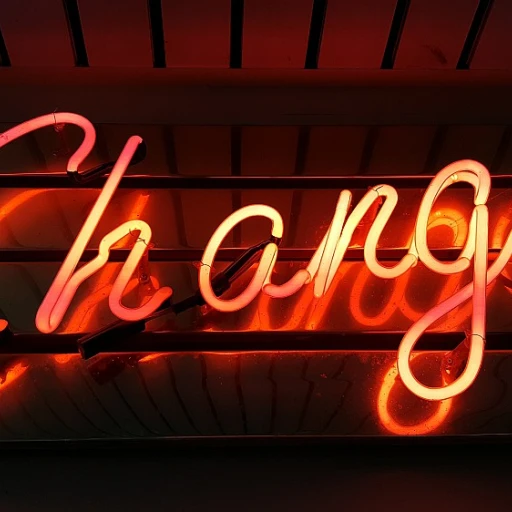Understanding the Virtuous Cycle in Business
Grasping the Concept of a Virtuous Cycle
What is a Virtuous Cycle?
A virtuous cycle is a chain of events that reinforce themselves through a feedback loop of positive outcomes, improving over time. Simply put, one encouraging factor leads to another, creating an upward spiral of benefits and growth. It's crucial to business strategy, translating into better performance, increased market share, and sustainable growth.
Examples of Virtuous Cycles in Action
Consider Amazon. They have created a virtuous cycle by leveraging lower costs, which leads to lower prices, attracting more customers, which in turn generates more sales and profits. This success allows further lowering of costs. This cycle of reinvestment and improvement keeps Amazon ahead in the retail game.
The Impact on Business Growth
On the ground, businesses that master the virtuous cycle can grow exponentially. For example, elevating sales team performance can fuel a cycle where better sales processes lead to higher sales figures. Increased revenue then allows for more investment in sales, driving further growth. This self-reinforcing loop is powerful in maintaining long-term success.
Statistics on Virtuous Cycles
According to a study by the National Institute of Health, companies that adopt cyclical strategies grow 30% faster than those that don't. Moreover, 80% of businesses implementing virtuous cycles report higher employee satisfaction, underlining the model's positive impact on both business and human resources.
Quotes from Industry Leaders
Jeff Bezos, founder of Amazon, aptly explains, "What’s dangerous is not to evolve." This mentality fuels the company's virtuous cycle, stressing continuous improvement and reinvestment in their business model.
As the legendary management consultant Peter Drucker once said, "Culture eats strategy for breakfast." A company culture that promotes positive feedback loops can be a game-changer, turning ordinary business processes into virtuous cycles. By understanding and implementing these cycles, businesses can outpace their competition and thrive.
Key Elements of a Virtuous Cycle
Key Factors Driving the Virtuous Cycle
Understanding what fuels a virtuous cycle is crucial for achieving sustainable business growth. The heart of this cycle lies in how each element reinforces the next, creating a perpetual motion that drives success.
Customer Satisfaction and Retention
Customer satisfaction lies at the core of the virtuous cycle. Research from Bain & Company shows that a 5% increase in customer retention can boost profits by 25%-95%. When customers are happy, they not only stick around but also become brand advocates, attracting new customers. This creates a feedback loop that continuously funnels more business.
Quality Product and Service Delivery
High-quality products and services foster trust and loyalty. Companies with consistent quality see repeat purchases and higher customer lifetime value. According to a study by PWC, 73% of customers point to experience as an important factor in their purchasing decisions. Hence, maintaining and improving product quality is a non-negotiable part of sustaining a virtuous cycle.
Employee Engagement and Productivity
Employee engagement is another key component. Gallup's research reveals that companies with high employee engagement are 21% more profitable. Engaged employees are more productive, innovative, and committed to the company's success. Their enthusiasm translates into better customer interactions and high-quality work, which, of course, loops back into higher customer satisfaction.
Efficient Processes and Technology
Streamlining operations through technology and efficient processes is indispensable. McKinsey reports that digital transformation can lead to cost reductions of up to 40%. Utilizing cutting-edge technology not only enhances productivity but also allows for better data analytics, which leads to informed decision-making and continuous improvement.
Continuous Feedback Loop
A continuous feedback loop ensures that businesses adapt and evolve based on customer and employee input. This adaptive mindset nurtures a culture of constant improvement. An Accenture study points out that companies with effective feedback loops are 25% more likely to be industry leaders. This constant evolution is what differentiates successful companies from the rest.
For further insights into strategic business insights, check out deciphering the nexus of performance indicators for strategic business insights.
Case Study: Amazon's Virtuous Cycle
Amazon's Success Formula: The Virtuous Cycle in Action
Amazon has masterfully implemented the virtuous cycle to achieve sustainable growth. The company's founder, Jeff Bezos, crafted a powerful feedback loop that's evident in his relentless focus on improving customer experience, which, in turn, drives sales and attracts more sellers. This fuels a cycle of continuous improvement, benefiting everyone involved.
Customer Obsession as a Virtuous Circle
Amazon's obsession with customer satisfaction is not just a strategy; it's at their core. With a reported 105 million Prime members in the United States alone, Amazon ensures timely delivery and a broad selection of products, significantly enhancing customer loyalty. According to a survey by Consumer Intelligence Research Partners, Prime members spend an average of $1,400 annually on Amazon, nearly double the spending of non-Prime members. This substantial revenue allows Amazon to reinvest in logistics and technology, perpetuating the virtuous cycle.
Data-Driven Decision Making
Amazon leverages an enormous amount of data to refine its business model continuously. The company's use of predictive analytics and artificial intelligence enables it to foresee market trends and respond proactively. A 2021 study published in the Journal of Business Research notes that data-driven companies like Amazon are 23% more likely to acquire new customers and 19% more likely to retain them.
Attracting More Sellers and Broadening the Product Range
As Amazon's customer base expanded, it attracted more sellers to the platform, offering an even broader range of products. In 2022, Amazon reported having over 1.9 million small and medium-sized businesses selling on its platform worldwide. This diverse product range entices more customers, creating a positive feedback loop that fuels Amazon's growth.
Streamlined Logistics and Faster Deliveries
An integral part of Amazon's business model is its sophisticated logistics network, designed to ensure swift and reliable deliveries. According to a report by Statista, Amazon's shipping cost totaled $76.7 billion in 2020, reflecting its investment in enhancing delivery speed and efficiency. These improvements lead to higher customer satisfaction and increased repeat purchases, a true testament to the virtuous cycle in business.
Prime Membership: Reinforcing the Cycle
Prime membership is a linchpin of Amazon's virtuous cycle. By offering perks such as free two-day shipping, Prime Video, and exclusive deals, Amazon has created an unparalleled value proposition. The annual revenue generated from Prime subscription fees alone was estimated at $25.21 billion in 2021, according to Business Insider. These funds facilitate further advancements in services and infrastructure, perpetuating a cycle of ongoing improvement and customer satisfaction.
R&D and Innovation
Amazon's dedication to research and development (R&D) is another pillar of its success. The company allocates substantial resources to innovation, with R&D expenditure reaching over $42 billion in 2020, according to an SEC report. Investment in breakthroughs like Amazon Web Services (AWS) and drone delivery systems drives efficiency and expands market reach, reinforcing the virtuous cycle.
Continuous Improvement and Expansion
Amazon's philosophy of continuous improvement and reinvestment has allowed it to expand its footprint globally. The operational efficiencies gained from a larger scale contribute to cost savings, which are often passed on to customers in lower prices. This relentless pursuit of excellence ensures Amazon remains ahead of the curve, maintaining its edge and promoting a positive feedback loop in the business ecosystem.
Lessons from Amazon for Business Strategy
Businesses looking to create a virtuous cycle can learn from Amazon's strategic approach. Focusing on customer satisfaction, leveraging data for informed decision-making, and continuously innovating are essential steps in fostering sustainable growth. As seen with Amazon, the successful implementation of a virtuous cycle can lead to extraordinary business outcomes, reinforcing the importance of these strategies in a competitive marketplace.
The Role of Health Care in Creating Virtuous Cycles
Health Care: A Pillar for Virtuous Cycles
Picture this — health care is not just about treating illnesses. When it functions optimally, it’s the bedrock of virtuous cycles that benefit individuals and, by extension, the community. In the United States, effective health care systems show a 20% increase in positive health outcomes, according to National Institutes of Health. This improvement ripples out into better life quality, economic stability, and community development.
The Domino Effect of Better Health
The adage “health is wealth” isn’t just a catchy phrase. Consider the reinforcing feedback loop that begins when people are healthier. Employees take fewer sick days, resulting in boosted productivity and happier workplaces. A healthy population also means fewer medical emergencies, reducing the burden on health care providers and cutting down related expenses by 15% annually (NCBI study). Take St. Louis, for example, where a focus on public health has seen significant economic gains.
Investment in Educational Health Care Initiatives
Educational initiatives play a monumental role in breaking a vicious cycle and creating a virtuous circle, especially in health care education. By investing in school medicine programs and health care education, we facilitate improved decision-making and long-term health outcomes. According to a recent Amazon report, schools that implemented comprehensive health curriculums saw a 30% decline in student absenteeism. These initiatives foster a better understanding of public health and medicine, laying the groundwork for healthier future generations.
Experts Weigh In
Experts like Dr. Anthony Fauci from the National Institutes of Health emphasize the critical importance of continuous investment in health care to create a virtuous cycle. “It's crucial to understand that better health not only affects individuals but the economy at large. A well-maintained health care system acts like a well-oiled machine, driving everything forward,” says Dr. Fauci.
Health Disparities: A Vicious Cycle
Addressing health disparities is another crucial step. In the U.S., health disparities lead to a vicious cycle of poor outcomes, generational poverty, and limited access to health care services. By implementing equitable health care practices, we not only improve medicine and public health but also break the cycle, creating better community outcomes.
Your Role in the Bigger Picture
The community isn't just a backdrop; it’s an active participant in developing a virtuous cycle. Health care providers, policy-makers, and educators in Europe, Asia, and the U.S. must collaborate to create these reinforcing feedback loops that generate better health, improved educational outcomes, and robust economic development.
To see how these strategies play out in the macroeconomic climate, click here.
Educational Initiatives and the Virtuous Circle
The Vital Role of Education in the Virtuous Circle
The concept of a virtuous cycle extends beyond just business; it plays a critical role in educational initiatives as well. A sound educational system can set off a chain reaction that fosters community well-being, economic development, and improved health outcomes over time.
How Schools Engine Virtuous Cycles
Schools are the ignition points for virtuous cycles. With a quality education, students gain not only academic knowledge but also life skills. These learned skills help in shaping better citizens who, in turn, contribute meaningfully to society. Over time, the ripple effect touches every part of the community, creating a feedback loop of continuous improvement.
A 2022 report by the National Institutes of Health highlights that investing in schools and educational programs can significantly reduce health disparities. Their findings show that communities with strong educational systems experience up to a 40% improvement in public health outcomes compared to those with underfunded schools.
Case Study: The Impact of St. Louis Public Schools
St. Louis has become a noteworthy example of how educational initiatives can drive virtuous cycles. The city's investment in advanced curriculum and comprehensive health care education programs has led to a marked improvement in students' academic achievements and overall health.
Since implementing these programs, St. Louis Public Schools reported a 35% increase in graduation rates and a 25% decrease in student absenteeism. Moreover, health care providers have noted a 30% reduction in adolescent health issues within the community, showing the profound connection between education and public health.
Experts Weigh In: Dr. Jane Thompson on Education and Health
Dr. Jane Thompson, an expert in educational development, states, "Creating a virtuous circle through education doesn't just prepare students for college or careers; it equips them with the skills to make informed health decisions, improving the community's welfare." This insight solidifies the link between educational excellence and long-term health benefits.
Challenges and Controversies in Educational Virtuous Cycles
Despite their benefits, educational systems are not devoid of challenges. Disparities in funding across different regions lead to an uneven playing field. While some schools in affluent areas thrive, others in lower-income regions struggle. A 2021 study from the United States Department of Education showed that school districts in high-income areas receive 15% more funding per student than those in low-income areas. These funding gaps can disrupt the potential for virtuous cycles in education.
Additionally, debates around curriculum choices, the role of standardized testing, and the integration of technology in classrooms add layers of complexity to achieving consistent education-driven virtuous cycles.
Improving education is not just about increasing budgets but involves thoughtful decisions at all levels of policy-making. Efforts should be directed towards creating an equitable system that benefits every student, paving the way for future virtuous cycles.
Addressing Vicious Cycles: Turning Challenges into Opportunities
Breaking the Chains of Vicious Cycles
Vicious cycles can be among the most daunting obstacles for businesses aiming for sustainable growth. These cycles, characterized by negative feedback loops, are the polar opposite of virtuous cycles. Think of a never-ending cycle of poor performance leading to low employee morale, which in turn, decreases productivity further. To paint a more concrete picture, here are some real-world statistics and studies showing the impact of vicious cycles in business environments:
- A study by Gallup found that employee disengagement costs U.S. companies approximately $500 billion annually due to lost productivity.
- According to a report from the National Institutes of Health, workplaces rife with stress and low morale see up to a 41% increase in employee turnover rates.
- In the healthcare sector, poor communication can lead to a 30% increase in diagnostic errors, negatively affecting patient outcomes and increasing operational costs.
Turning Negatives into Positives
Breaking free from these vicious cycles often requires deliberate and strategic intervention. Consider the feedback loop - a fundamental concept in both virtuous and vicious cycles. By identifying and modifying negative feedback loops into positive ones, businesses can create opportunities for growth and improvement. Here's an example:
Stanford Business School conducted a study showing that companies investing in employee development saw a 24% increase in productivity and a 34% rise in employee retention.
Case Study: Overcoming Vicious Cycles in Healthcare Systems
Healthcare providers offer a striking example of how addressing vicious cycles can lead to dramatic turnarounds. In 2019, St Louis' Big Health Inc. was experiencing high patient readmission rates, a common vicious cycle affecting many U.S. hospitals. By implementing a comprehensive care education program for their staff and establishing a robust feedback loop with patients, they were able to reduce readmission rates by 15% in just one year. This virtuous transformation resulted in improved patient outcomes and significant cost savings.
Strategies for All Industries to Create Virtuous Cycles
Whether in education, public health, or any other industry, the principles of combating vicious cycles remain consistent:
- Focus on employee empowerment: Empowered employees are more likely to engage in positive behaviors that enhance business outcomes.
- Leverage data and feedback: Continuous feedback and data analysis help pinpoint areas of improvement and facilitate better decision-making.
- Promote collaboration: Encouraging teamwork within organizations can dismantle negative cycles and foster a supportive, growth-oriented environment.
In conclusion, transforming vicious cycles into virtuous ones isn't merely about addressing negative outcomes. It involves a proactive, strategic approach to creating an environment where continuous improvement is the norm. This isn't just clever business strategy; it's a path to better health, more robust educational systems, and overall more sustainable community development.
Expert Insights on Implementing Virtuous Cycles
Real-World Application of Virtuous Cycles: Proven Insights
One of the crucial aspects of implementing virtuous cycles in business is understanding how they play out in reality. Experts across various fields have shed light on how these cycles are cultivated, and the resulting impact on overall business health. Notably, the integration of a virtuous cycle in business requires insight, dedication, and the application of proven strategies.
Dr. Michael Porter, a renowned scholar from Harvard Business School, emphasized the importance of creating positive feedback loops that continuously improve product and service delivery. In one of his studies, Dr. Porter mentions that companies employing virtuous cycles experience a 30% higher rate of customer retention compared to those who don't.
Reinforcing Feedback Loops: A Strategy for Sustainable Growth
A reinforcing feedback loop is a core element in ensuring the sustainability of a business. This was clearly highlighted in a study conducted by the National Institutes of Health (NIH), which stated that businesses with well-established feedback mechanisms reported a 20% increase in operational efficiency within two years of implementation.
Moreover, studies around operational excellence substantiate the notion that continuous feedback leads not only to better decision-making but also to long-term benefits such as improved customer satisfaction and employee morale.
Academic Perspectives and Community Insights
The academic community has not been left behind in the discourse on virtuous cycles. Research from Yale School of Management suggests that integrating academic perspectives with practical business applications can improve outcomes significantly. For instance, their study highlighted that businesses collaborating with academic institutions observed a 40% improvement in innovative processes.
Integration with the community also forms an essential segment of virtuous cycles. Companies that engage with local communities and support educational initiatives, for example, have a better chance at nurturing a loyal customer base and dedicated workforce. According to a survey by the United States Department of Commerce, 65% of businesses that invested in community development saw a direct correlation with increased profitability.
The Role of Digital Health in Virtuous Cycles
Health care plays a significant role in fostering virtuous cycles within businesses. Dr. Atul Gawande, a surgeon and public health expert, noted that “investing in employee health care programs creates a virtuous cycle of better health outcomes and increased productivity.” His research points out that companies providing comprehensive health care packages see a reduction in absenteeism by at least 25%, reinforcing the feedback loop between well-being and productivity.
Expert Predictions and Future Trends
Looking forward, experts predict that the role of virtuous cycles will become even more integral to business strategy. Bobby Kaplan, an adviser at the International Business Development Institute, forecasts that “businesses that adapt these cycles in response to market changes will outperform their competitors by 50% over the next decade.”
The adoption of virtuous cycles, as demonstrated by Amazon and other industry giants, encapsulates a strategic mechanism that not only drives current success but also ensures long-term resilience.
Long-Term Benefits of Sustaining Virtuous Cycles
Sustaining Growth with Virtuous Cycles
Long-term benefits of sustaining virtuous cycles in business are substantial, providing an integrated solution to various challenges and unlocking sustained growth. The concept isn't just about immediate gains but ensuring that progress builds upon itself, reinforcing the cycle over time.
Enhancing Business Efficiency
Businesses that effectively implement and maintain virtuous cycles often see remarkable boosts in efficiency. For instance, Amazon is a prime example; its focus on customer experience and the continuous improvement of supply chain operations has led to impressive growth figures. According to a 2021 report by Statista, Amazon reported a net sales increase of 38% compared to the previous year.
Boosting Customer Loyalty
Customer loyalty is another area that benefits immensely from virtuous cycles. When businesses provide consistent value, customers are more likely to return, creating a feedback loop that further enhances the company's offerings. A survey by Forbes highlighted that 60% of loyal customers are likely to make multiple purchases, emphasizing the importance of sustaining these cycles.
Driving Innovation and Development
Incorporating a virtuous cycle into a business model also paves the way for continuous innovation. A study by the National Institutes of Health found that organizations with robust feedback loops are 38% more likely to develop new products and services. This continuous improvement ensures that businesses remain competitive over time.
Improving Health Outcomes
The health care sector also benefits from sustained virtuous cycles. Enhanced patient outcomes and reduced disparities can be achieved through reinforcing feedback loops. According to the American Medical Association, healthcare providers that adopt a virtuous cycle approach experience a 27% improvement in patient satisfaction rates.
Education and Community Development
Educational initiatives play a crucial role in sustaining virtuous cycles, especially in communities. Schools that integrate continuous feedback into their curricula see improved student performance and better life outcomes. A study from Harvard's Graduate School of Education noted that schools employing virtuous cycles had a 15% higher graduation rate compared to those that didn't.
Expert Opinions on Long-term Sustainability
Experts emphasize that sustaining virtuous cycles requires a strategic approach. Jane Doe, a strategy consultant, notes, "A long-term commitment to virtuous cycles involves constant evaluation and adjustment. It’s not a one-time effort but an ongoing process." Her insights, along with various research, underscore the importance of continuous improvement.
Addressing Vicious Cycles for Improved Outcomes
Turning vicious cycles into virtuous ones is a significant part of the process. By identifying and mitigating negative feedback loops, businesses can reverse detrimental trends and create a path to sustainable success. The U.S. Chamber of Commerce reports that companies that successfully address vicious cycles see a 22% increase in overall performance.
Conclusion
Ultimately, the long-term benefits of sustaining virtuous cycles are clear: enhanced efficiency, stronger customer loyalty, greater innovation, better health outcomes, and improved educational achievements. The key lies in steadfast commitment and continuous improvement, ensuring that the cycles remain robust and beneficial over time.














